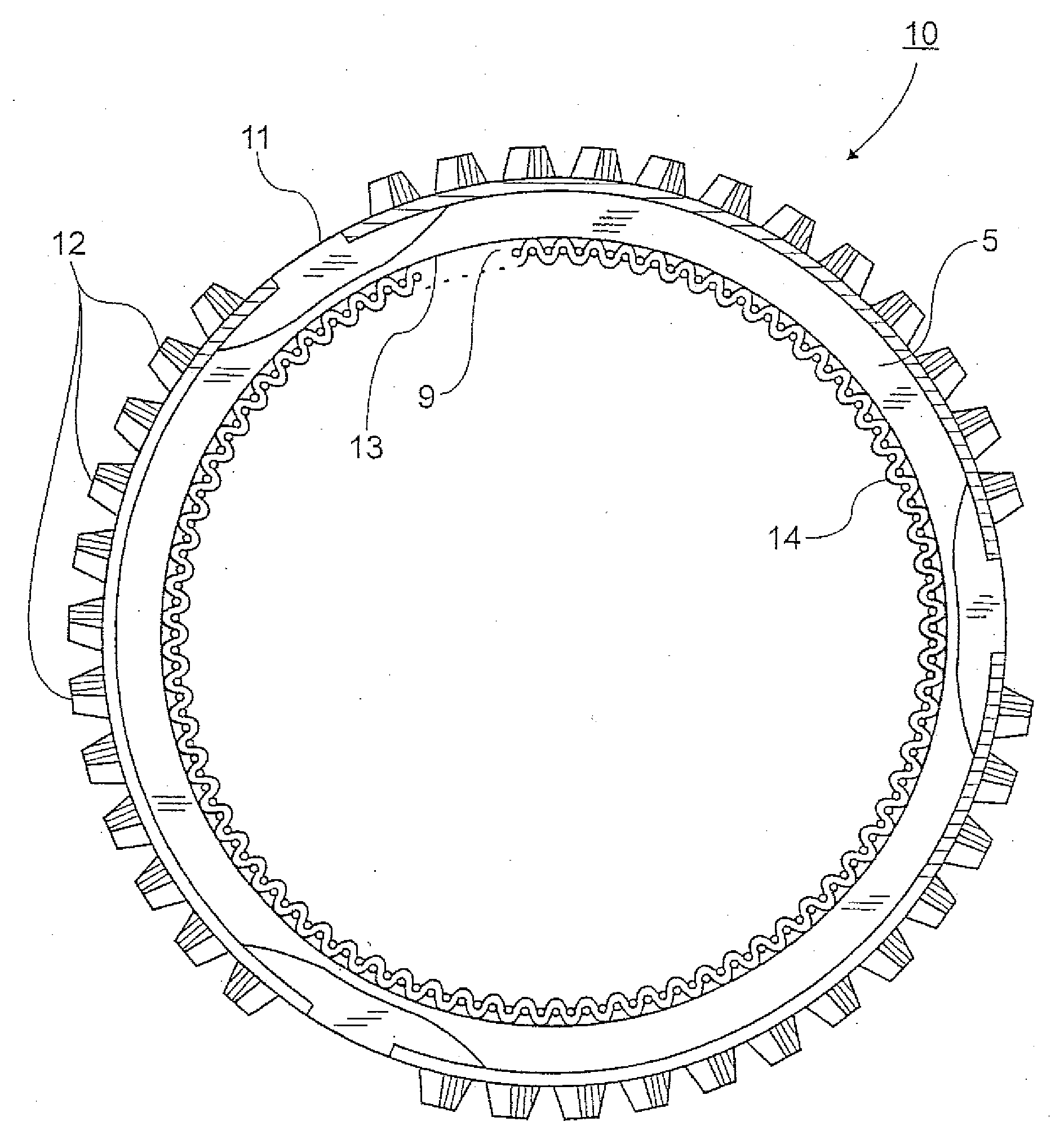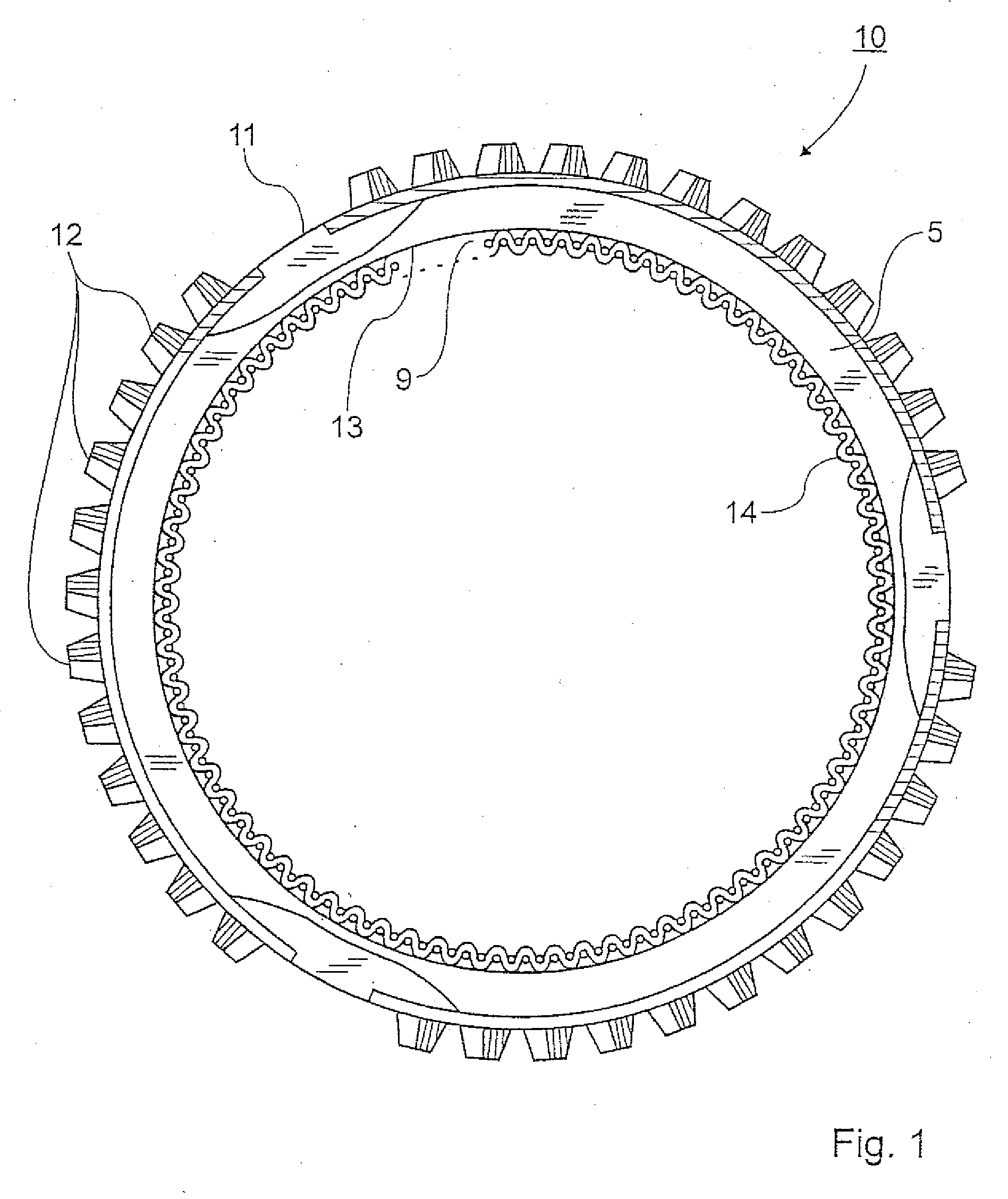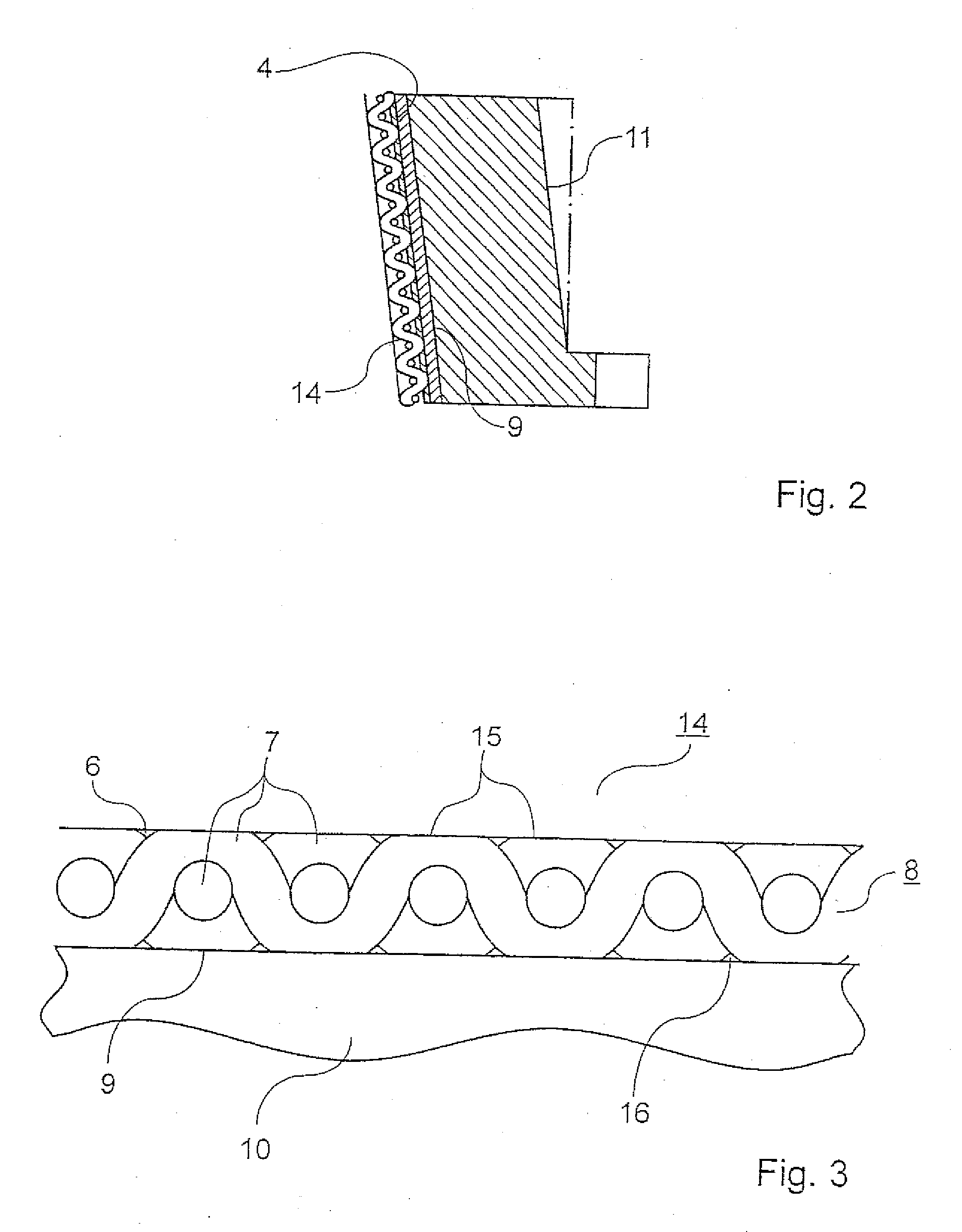Synchronizer ring
a technology of synchronizer rings and synchronizers, applied in the direction of friction linings, mechanical actuated clutches, transportation and packaging, etc., can solve the problems of transmission oil not being sufficiently displaced, disadvantageous failure of friction layers to withstand thermal conditions, and high complexity of weaving operations, etc., to achieve the effect of improving service li
- Summary
- Abstract
- Description
- Claims
- Application Information
AI Technical Summary
Benefits of technology
Problems solved by technology
Method used
Image
Examples
Embodiment Construction
[0032]FIG. 1 shows a plan view of a synchronizer ring 10, the outer circumference 11 of which has teeth 12 as a formation which mechanically meshes with a gearwheel (not shown) of a transmission. On the inner circumference 13 of the synchronizer ring 10 is a conical friction surface 9, to which a friction layer 14 is attached. The friction layer 14 is positioned opposite a friction partner (not shown) which has a rotational speed relative to the synchronizer ring 10. During a gearshift actuation, the friction layer 14 comes into contact with the friction partner, with the result that the relative velocity between the function partners is reduced by friction and the friction partners are synchronized. The synchronizer ring 10 is made from brass.
[0033]In another embodiment (not shown), the friction layer 14 may be arranged on the outer circumference 11 of the synchronizer ring 10, and the teeth 12 on the inner circumference 13.
[0034]FIG. 2 shows a cross section through the synchronize...
PUM
 Login to View More
Login to View More Abstract
Description
Claims
Application Information
 Login to View More
Login to View More - R&D
- Intellectual Property
- Life Sciences
- Materials
- Tech Scout
- Unparalleled Data Quality
- Higher Quality Content
- 60% Fewer Hallucinations
Browse by: Latest US Patents, China's latest patents, Technical Efficacy Thesaurus, Application Domain, Technology Topic, Popular Technical Reports.
© 2025 PatSnap. All rights reserved.Legal|Privacy policy|Modern Slavery Act Transparency Statement|Sitemap|About US| Contact US: help@patsnap.com



